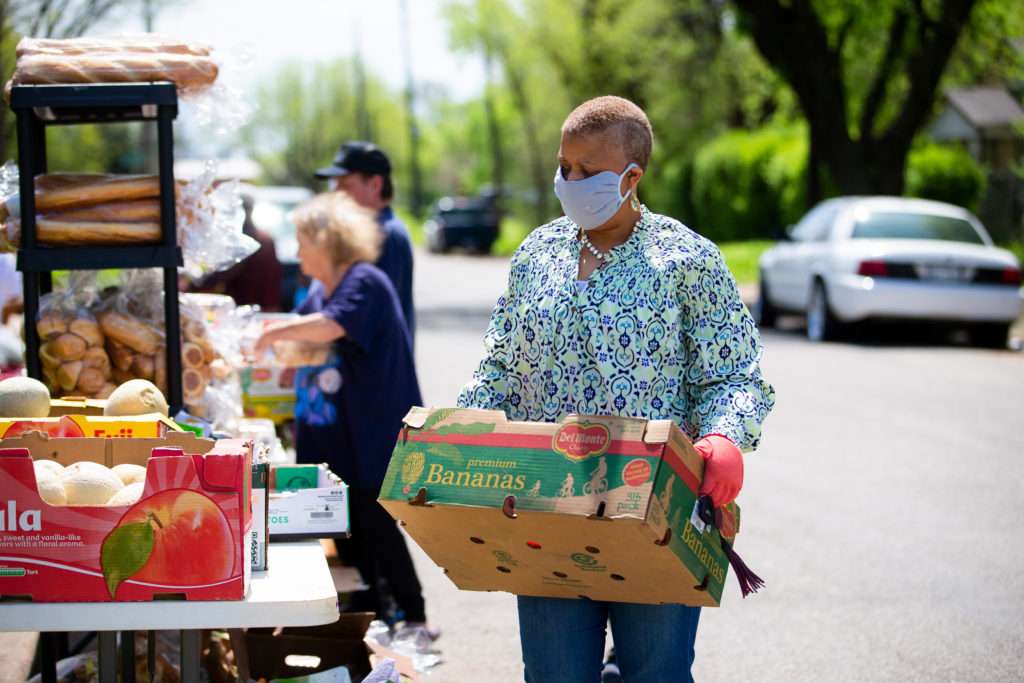From Healthcare to Healthy Living: Investing in Community Health
The COVID-19 pandemic has exposed the shortcomings of public health in America and has revealed chronic underinvestment in community health and an overreliance on treatment of illness rather than prevention.
Our recent Heart+Mind Strategies Roundtable brought two special guests to discuss these issues: Dr. Marc Harrison, President and CEO of Intermountain Healthcare and Elena Marks, President and CEO of Episcopal Health Foundation in Houston.
Both panelists believe that a core issue of our current healthcare system is that it wrongly conflates “health” with “healthcare”. As a result, our system incentivizes treating patients when they are injured, ill, or in the hospital rather than focusing on keeping patients healthy and out of the hospital.
This current incentive structure, Harrison shared, leads to overtreatment as almost 50% of knee arthroscopies in the US, and 30% of all treatments, may, in fact, be completely unnecessary. It is not evil, Harrison explained, but, rather, providers have a bias toward action when the economics line up.
The early stages of the pandemic highlighted this faulty approach. While the US lacked the critical infrastructure to test and trace the spread of the virus, we measured our early successes by whether there were enough ventilators, “which is a really poor way to deal with a pandemic,” Marks expressed.
Barriers to Healthy Communities
There is more to improving community health than merely rethinking the healthcare industry incentive structure. Improving community health really begins with non-medical factors, as they are more influential on long term health outcomes.

In fact, a large contributor to one’s health is the reality of the community in which you live. Issues such as safety, transportation, violence, racism, education, job opportunities, access to nutritious food, air and water quality, language and literacy skills all shape the likelihood of healthy living.
Furthermore, Marks and Harrison brought to light how the digital divide is a key determinant to healthier living. Many without smartphones live without access to less expensive and convenient healthcare options. Harrison suggests a greater emphasis should be placed on using digital solutions to connect the needs to people with the services that exist.
The barriers for a healthier population lead to a mismatch between our expectations of community health and reality. Our survey finds that while 77% of Americans believe the health of the population should be a high priority, only 32% think the health of the population where they live is “excellent.”
Americans are frustrated with the lack of transparency surrounding treatment costs and their insurance plans. Three-in-four (75%) Americans believe their insurance options should have high value, only 38% feel their insurance is performing well. Additionally, 73% of respondents wanted a reduction in healthcare costs.
3 Business Roles In Promoting Community Health
Despite the gulf between expectations and performance of community healthy, Americans remain optimistic and believe the private sector working with government can help people live healthier lives at the community level. Most (77%) Americans believe it is possible to make communities healthier, and 67% feel the business community should make this an essential priority.
RELATED: 10 Ways Businesses Can Take the Lead
Marks and Harrison recommend business get involved with community health in several ways. Three that stood out to us are as follows:
- First, businesses should listen to and deeply understand the wants and needs of the community, engage their employees in this discovery, and reflect upon where their organizations can make the most positive impact. This not only guarantees more meaningful community responsibility, but when employees see their employer engaged in their community it leads to a greater sense of purpose in their work and in the greater role they have in the community where they live.
- Second, reimagine corporate giving. Marks calls on business to focus on community engagement directly where employees live and in ways that tie back into the health and well-being of the work force. This can include investing their grant making powers into health, not just healthcare, which could involve affordable housing, park renovation, transportation solutions, which is different than a lot of traditional corporate giving practices.
- Third, organizations should work to better understand health plans that focus on outcomes and prevention to change their suite of benefits offered (value-based care plans). Options for such health insurance plans are increasing and present an important opportunity to both cut costs and help genuinely improve healthy living among employees.
Harrison summed it up well in a final challenge to business leaders: “Really simple. Ask yourself, would I rather be interacting with a system that is incentivized by my illness or by my health?”
These strategies change the conversation about healthcare to acknowledge that the health of our communities is as important as the quality of the healthcare itself. As we shift the incentive to keeping people healthy the story rapidly changes to involve all stakeholders—something very aligned with the recent movement toward stakeholder capitalism.
As the US moves out of the pandemic, the private sector can, and should, be a catalyst and champion for helping us appreciate and realize that quality of healthcare is only one means to an end, but it is not the end in and of itself.
Let’s focus on the community-level factors that shape healthy living. Together.
Check out the full session below.
